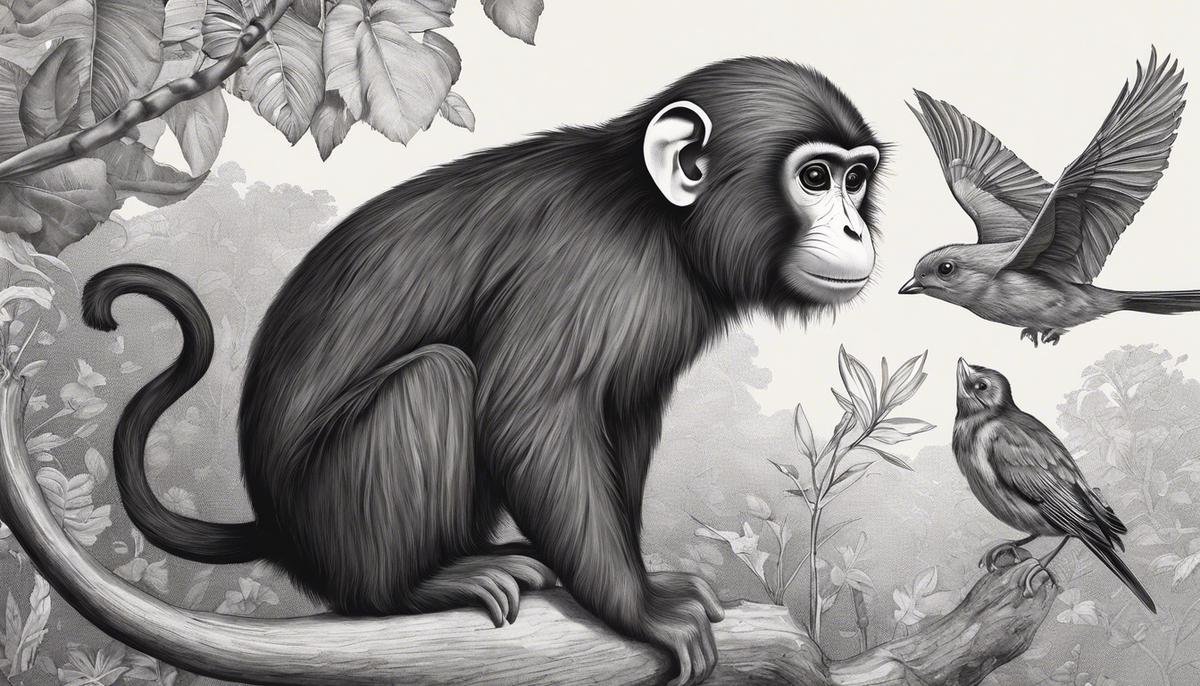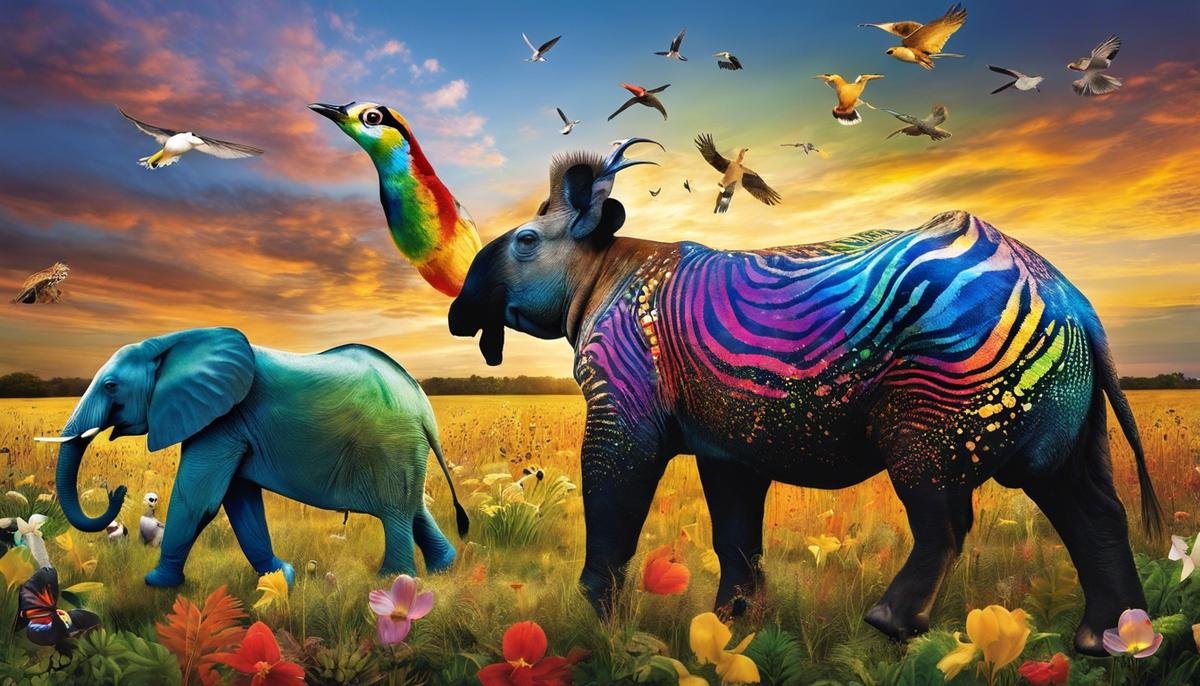
Autism Spectrum Disorder (ASD) – a complex developmental condition presenting a range of significant challenges in social interaction and communication – is a term that has primarily been linked to human behavior. Yet, as our knowledge of the animal kingdom deepens, the question arises if animals, like humans, may exhibit traits related to ASD. This exploration begins with a comprehensive grasp of autism, its manifestations, types, and potential causes – an understanding that lays the groundwork for extending this inspection to animals. A look at the behavioral parallels between humans and animals reveals how certain behavioral patterns, symptomatic of autism, could also be present in the animal kingdom. These possibilities offer fascinating implications, not just for veterinary science, but also for autism research, and our relationship with animals.
Understanding Autism
Title: Unmasking Autism: Understanding the Spectrum
Greetings, dear community of parents and caregivers! Let’s chat about a topic that has touched the lives of countless families around the world: autism. Often misunderstood, it’s high time we unravel this condition, identify its manifestations, and ultimately, bolster our understanding and empathy.
First things first: what exactly is autism? It’s a neurological and developmental disorder that affects how a person behaves, interacts with others, communicates, and learns. Known formally as autism spectrum disorder (ASD), it comprises conditions such as autism, Asperger syndromes, and other disorders related to brain development.
The term ‘spectrum’ is pivotal here, meaning autism can present itself in numerous ways and at varying degrees of severity. One child may have extreme difficulty communicating, while another could have a library of words but a hard time making friends. There isn’t a one-size-fits-all profile when it comes to autism, hence the importance of staying alert to any signs in our kids’ development.
Common manifestations of autism can begin to appear as early as in infancy, and usually show up before a child turns three. Let’s delve into symptoms spread across multiple areas such as social interactions, language development, and behavior. Because remember, dear folks, understanding is the first step towards acceptance and support.
In terms of social interactions, autistic children might avoid eye contact, appear uninterested in others, and prefer to play alone. In addition, they may struggle to understand other people’s feelings and struggle to express their own emotions.
When it comes to language or communicative abilities, symptoms may include delayed speech, repetition of phrases, difficulty in maintaining conversations, and an inability to grasp vernacular humor or sarcasm. It’s a bit like winning a lottery when it comes to language; some kids may be fluent conversationalists, while others may be minimally verbal.
Behaviorally, some children may engage in repetitive movements such as rocking or spinning, have a fascination for parts of an object (like the wheels of a toy car), and display an entrenched resistance to change. Moreover, they might have uneven skill development, excelling in certain areas like music or math while lagging behind in others.
So, you see, dear readers, autism is not the scary mystery it’s often portrayed to be. Yes, it brings challenges—but don’t all aspects of life and parenting? What matters is molding a world where all children, regardless of where they fall on the spectrum, feel loved, accommodated, and appreciated. By understanding autism better, we can drive acceptance, promote inclusivity, and ultimately lift each other up.
And finally, always remember: Their journey may be different, but that’s what makes it absolutely beautiful. And as the good old saying goes – different, not less. Until next time, sending love and light your way from this corner of the Internet.

Comparison Between Animal and Human Behaviors
Connecting Animal Behavior to Human Traits: A Fresh Perspective on Autism
The world of animals has always fascinated us. Their behaviors, their instincts, their adaptations all capture our curiosity. It seems there’s a great deal we can observe and learn from them, including insights that may help us understand autism more deeply. Of course, we’re not equating humans with animals but merely drawing parallels to further our understanding of this complex condition. Leading experts in various fields such as psychology, neurobiology, and behavioral science have begun exploring this unprecedented territory more closely.
Noticing patterns and similarities in the animal kingdom isn’t new. Many of you, dear parents, may remember your introductory psychology class, in which Pavlov’s dogs and Skinner’s pigeons starred as prime examples. These animal models have greatly contributed to our understanding of general principles of learning and behavior. Recently, researchers have expanded their approach to include studying animals for a more specific objective – to enhance our understanding of autism.
Monkeys, for instance, are social creatures — much like us. By examining their instinctual behaviors, scientists have begun to compare and contrast their social dynamics with humans. Observations of monkeys who display certain behaviors similar to autism, such as avoiding eye contact or interacting less with their peers, offer a fresh perspective from which to view autism.
Of course, it’s important to note that we’re treading carefully here. No animal model can perfectly replicate all the intricacies of human autism. Yet, they can potentially illuminate aspects that help us deepen our understanding.
Mice also play a vital role in this novel approach. Scientists often use genetically engineered mice to probe autism’s genetic origins. By inducing mutations associated with autism in humans, they then observe consequential changes in the mice’s behavior, providing clues about how similar changes might manifest in humans.
Birds, too, can offer insights, particularly those who are songbirds. The learning process in these birds – listening, interpreting, practicing, and producing complex songs, has fascinating similarities to human language acquisition. Some birds, when deprived of adult tutors, develop abnormal songs or are unable to sing at all. Interestingly, this mirrors some of the language and communication challenges typically seen in children with autism.
Through these animal studies, scientists hope to answer some of the burning questions surrounding autism. They could also potentially serve as a basis for testing the potential impact and efficacy of various therapeutic strategies before they’re tried in humans. Providing promising hypotheses, these animal models are increasingly becoming valuable tools that complement traditional research.
In this shared journey of understanding, these study results could serve as buoyant life-rafts, bringing hope to many who are navigating the vast ocean of autism. Let’s embrace our responsibility to continuously learn about autism and use our newfound knowledge to cultivate an environment of love, acceptance, and support. After all, the chance to change the world begins right at our doorsteps, in our homes, and with our children.

Animals Showcasing Autistic Traits
”Animals and Autism: Discovering New Perspectives on Autism Through Animal Studies
It might seem strange to think about animals demonstrating signs of autism. After all, we often perceive autism – and mental health issues in general – as distinctly human concepts. But emerging studies are shedding light on autistic-like behaviors in animals, opening new perspectives on understanding this disorder.
A fascinating example is dogs, man’s best friend themselves. Dogs have shown incredible capacity for learning and emotional intelligence. Certain canine behaviors seem reminiscent of autistic ones. For instance, scientists recognize the repetition of certain movements or an unusual fascination with certain objects as potential autistic-like patterns amongst dogs, much like the stimming behavior seen in humans on the autism spectrum.
Experts have also found potential examples of autistic traits in animals within the wild kingdom. Meerkats, known for their communal and cooperative living style, have demonstrated signs of what could be likened to autism. While the interpretation of behaviors in wild animals is extraordinarily complex, some meerkats display significant difficulty socializing with their peers, akin to the struggle of social interaction that many children with autism face.
Studying the behavior of lab animals can further provide essential insights into autism. Mice, for instance, are often genetically modified to help scientists explore potential genetic triggers of autism. In a typical “autism mouse model,” the mice exhibit less social interaction, similar to how some people with autism can struggle with forming and maintaining social relationships.
Songbirds too have offered valuable insights. They bear a striking comparison to children with autism learning language skills. Birds learn to sing by listening to their same-species peers, in a similar way young kids learn to talk by replicating adult human speech. In both scenarios, the transition to effective communication may be disrupted, drawing intriguing parallels between songbirds and autistic children grappling with language acquisition.
Cattle, yet another example, can also show signs of autistic-like behavior. Temple Grandin, a renowned autism spokesperson herself diagnosed with autism, has based her entire career on drawing parallels between her firsthand experience with autism and her extensive knowledge of bovine behavior.
As we expand our empathetic understanding of autism, it’s essential to keep exploring these exciting research frontiers. More than uncovering potential treatment paths, these studies help us foster a compassionate, informed, and respectful environment for our loved ones living with autism. The ripple effect, like the snowballing impact of autism awareness, has the power to transform our society into a nurturing, understanding, and supportive community, for both humans and animals alike.
Dtudying animals aren’t just interesting discoveries – they’re a compassionate and inclusive step forward.
”
Implications of Recognizing ASD Traits in Animals
Recognizing Autistic Traits in Animals: A New Outlook
Animals have always been a constant source of fascination, revealing surprising insights about our world. More recently, between wagging dog tails and meerkat mobs, the animal kingdom has provided a new panorama into understanding autism spectrum disorder (ASD).
Consider our faithful canine friends. Their absolute devotion can mask certain autistic-like behaviors. Dogs indeed showcase repetitive patterns, from the routes they walk to the toys they favor. While this behavior might seem charming or quirky to pet owners, it mirrors the repetitive patterns found in individuals with autism. Recognizing and accepting these traits fosters empathy, highlighting the importance of patience and understanding with our fellow humans who mirror similar behaviors.
Next, picture a meerkat sentinel standing guard while its mob forages. On occasion, a socially challenged meerkat may struggle to integrate, a scenario reminiscent of the social difficulties experienced by people on the autism spectrum. These meerkat encounters remind us that social engagement doesn’t come naturally for all beings. By recognizing this pattern in animals, we can better relate to and empathize with the social challenges faced by those with autism.
Turning towards laboratory research, rodents have been pivotal in unlocking potential genetic links to autism. Lab mice have been engineered to carry genes related to autism in humans. The autistic-like behaviors exhibited by these mice, such as struggling with change or showing less interest in social interaction, offer a unique insight into the genetic aspect of autism, enhancing our appreciation for the complexity of this condition.
Then there is the fascinating example of songbirds. Observing these creatures learning songs from their parents bears striking resemblance to how children acquire languages. Unfortunately, some songbirds face challenges in learning their tunes – an antecedent to children with autism navigating communication barriers. Understanding this intriguing correlation can result in strategies to help children with autism refine their communication skills.
In a more recent study, cattle have presented surprising autistic-like behaviors. Some cows will only drink from a specific water trough or become agitated when their schedule is changed, all reminiscent of the tendency for routine and structure shared by those with autism. Recognizing these familiar traits in such a different species expands our understanding of ASD beyond the human experience.
At present, the relationship between autism and animal behavior continues to be an evolving field of research. As new discoveries unfold, they promise to usher in more profound insights into the nature of autism. This expansion of knowledge can only bolster the campaign for greater acceptance and inclusivity for individuals with ASD.
Dominant within this dynamic conversation is the progressive shift towards empathy. Appreciating autistic traits within our furry friends provides a unique vantage point, lessening preconceived notions around autism and encouraging an accepting and inclusive stance.
In conclusion, the animal kingdom’s invaluable contributions to understanding ASD illustrates the interconnected tapestry of life, where similarities exist in the most unexpected corners. Whether it’s our pet dogs or distant meerkats, animals emphasize that ASD is not solely a human experience. Recognizing these autistic traits in animals sheds light on the broader spectrum of autism, fostering an empathetic society that truly values its diverse members. After all, aren’t “different” and “unique” words that also describe the beauty of our diverse world?

Examining the potential mirror of autistic traits in animals, poses a significant shift in the way we perceive ASD. It encourages a perspective that extends beyond the human realm, recognizing it as a trait that transcends species barriers. Recognizing self-stimulation, communication difficulties, or social challenges in animals as potential markers of autism, redefines our understanding of the disorder. Furthermore, it has the potential to reshape our relationship with our pets, asking of us a new type of understanding and empathy. Beyond the practical elements, it unravels an ethical dimension that questions our responsibility towards animals showing such traits. By presenting a broader, more comprehensive view of autism, this exploration sheds light on a universal dimension of the disorder which has, until now, largely remained unexplored.




